Brunei Darussalam’s lush forests are home to an astonishing array of biodiversity, yet many of its tree species remain unfamiliar to the general public.
With an estimated 2,000 tree species thriving in the nation’s tropical rainforests, understanding their ecological and cultural significance is paramount for conservation.
However, as deforestation, climate change, and human activity threaten forest ecosystems, knowledge of local trees becomes not only a means of preservation but also an essential tool in sustainable reforestation and environmental stewardship.
THE POWER OF KNOWLEDGE
Muhd Zulkiflee Abdullah, a seasoned forestry officer with nearly four decades of experience, has witnessed the transformation of Brunei’s landscapes firsthand and shared how reforestation efforts are crucial in restoring areas devastated by recurring fires and droughts.
Yet, without adequate knowledge of tree species, conservation efforts risk inefficiency or even unintended ecological harm.
The replanting of certain species, like acacia trees, can have environmental drawbacks.
These trees contain high levels of resin and oils in their leaves, making them more susceptible to fires. However, acacias also play a valuable role in restoring degraded land.
The species is known for its ability to “fix” nitrogen, a process where nitrogen-fixing bacteria in the tree’s roots convert atmospheric nitrogen into a form that other plants can use. This natural process acts as a soil fertiliser, improving soil fertility and boosting crop yields.
On the other hand, planting native trees such as gaharu (agarwood) can offer benefits that support both ecological balance and economic sustainability.
Native to Southeast Asia, including India, agarwood is a highly prized aromatic wood.
It forms when the tree becomes infected with a specific type of mould, triggering the production of a dark, fragrant resin.
This resin is valuable in perfumes, incense, and traditional medicine, providing a unique opportunity for both conservation and commerce.
However, without an understanding of these species, valuable trees are often misidentified, illegally harvested or overlooked in restoration projects.
“Not many people are familiar with the tree species found in Brunei – perhaps only students or academics in the field,” said Zulkiflee.
“Even for them, tree identification requires experience and skill, as trees, like all living beings, change as they grow.”
And without widespread awareness, conservation initiatives can be undermined by a lack of understanding regarding tree selection, ecological roles, and long-term forest regeneration.
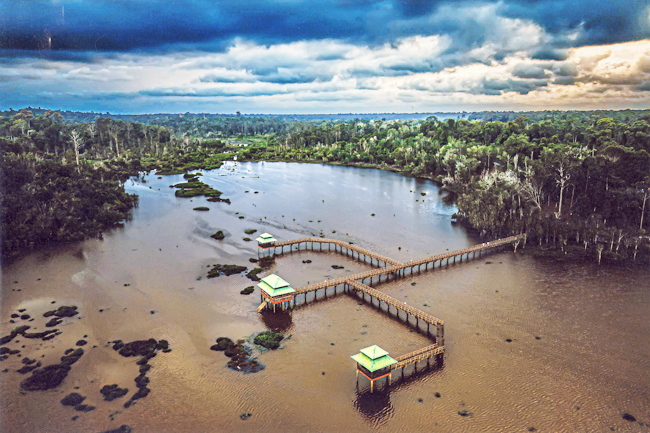
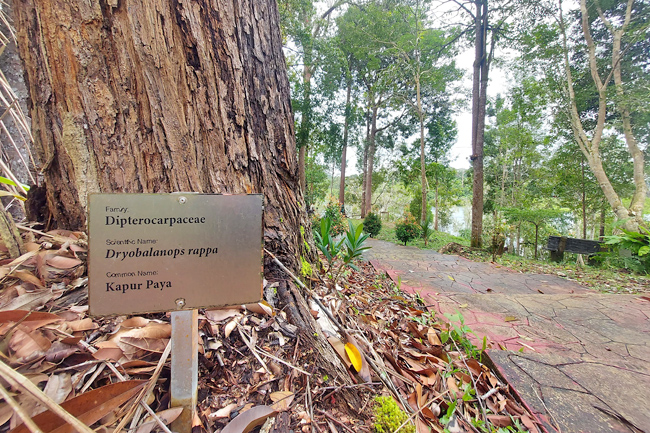
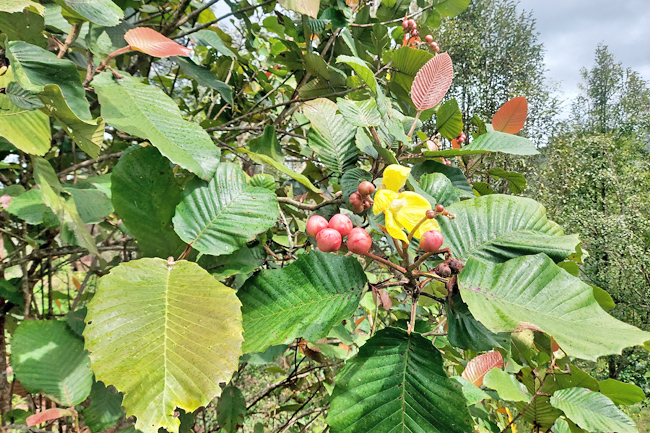
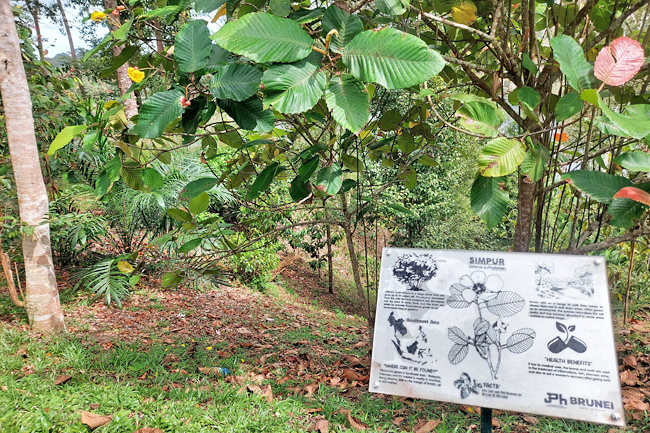
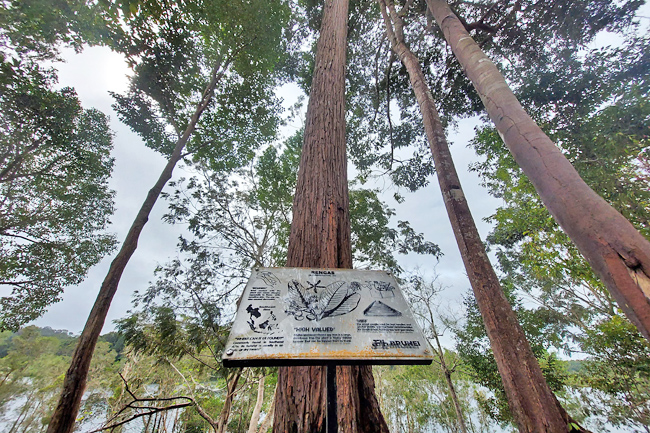
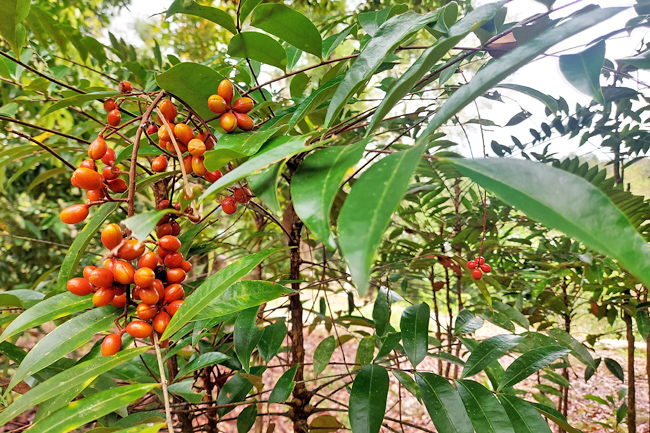
AN IRREPLACEABLE HERITAGE
Brunei’s forests are part of the greater Bornean ecosystem, one of the most biodiverse regions in the world.
Many of its endemic species hold ecological, medicinal, and cultural significance. Trees such as tongkat ali, renowned for its medicinal properties, and madang sisik, historically used for timber and believed to ward off bad luck, exemplify the deep-rooted relationship between local communities and their forests.
The simpur, Brunei’s national flower, is one of the most iconic plant species in the country. It features prominently on the country’s one-dollar note and is commonly found along rivers, particularly the Temburong River.
There are eight locally recognised species of the simpur tree, with some, such as the simpur bini, being used in traditional medicine to treat wounds and stop bleeding.
Resilient and able to thrive in a variety of conditions, the simpur is a symbol of the Sultanate’s success and development, representing both the nation’s natural beauty and cultural heritage.
Historically, local communities have also found practical uses for the large leaves of the simpur, employing them in food containment and other everyday purposes.
However, much of this knowledge is fading. As younger generations become more disconnected from traditional forest practices, valuable insights risk being lost.
“Learning from the community and local elders has been invaluable,” Zulkiflee said.
“Knowing scientific names is important, but so is understanding local names and traditional uses. Without this knowledge, we wouldn’t be able to properly identify, protect or appreciate these trees.”
This loss of knowledge has tangible consequences. The past rampant poaching of gaharu serves as a cautionary tale. Prized for its fragrant resin, agarwood’s illegal harvesting led to significant population declines.
Today, increased awareness and regulation have helped curb its exploitation, demonstrating how knowledge can directly aid conservation efforts.
A PATH FORWARD
Promoting tree knowledge among the public, especially youth, is crucial to conservation efforts, continued the forestry officer.
Schools engaging in reforestation projects not only help restore degraded lands but also cultivate environmental consciousness in the next generation.
When students learn to identify trees and understand their ecological functions, they become more invested in protecting them.
Moreover, integrating traditional knowledge with modern conservation strategies can enhance preservation efforts.
Local communities, particularly indigenous groups, have long relied on forest resources sustainably, and their knowledge offers valuable insights into species selection, growth patterns, and sustainable harvesting techniques.
Ultimately for Zulkiflee, conservation is not merely about protecting trees – it is about safeguarding an entire ecosystem, a cultural heritage and a way of life deeply intertwined with Brunei’s natural landscapes.
By fostering awareness and appreciation for Brunei’s unique flora, the country can ensure that its forests continue to thrive for generations to come. – Wardi Wasil






